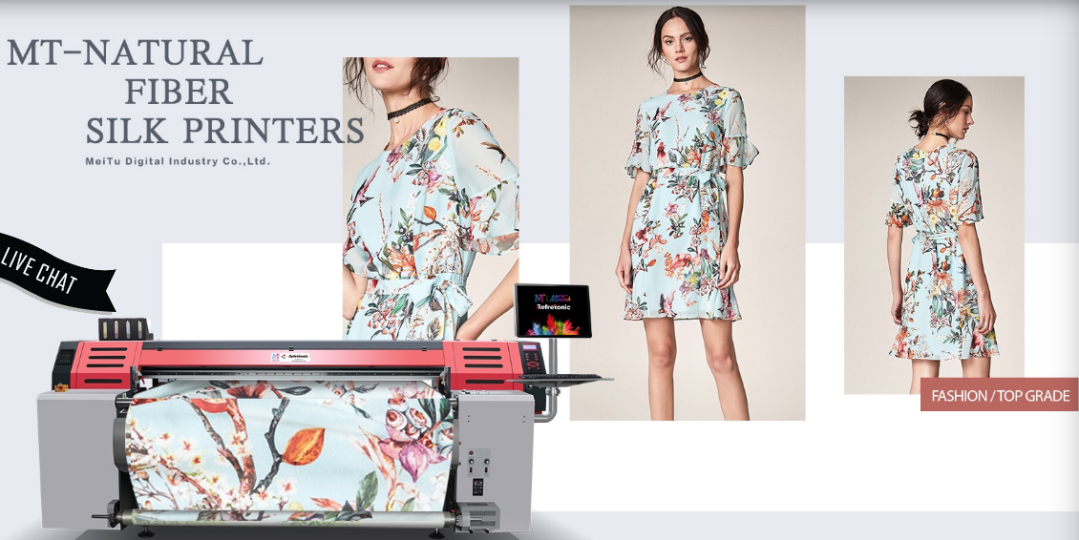The inkjet printing technology used in digital printing was first patented in 1968. In the 1990s, inkjet printers became widely available for paper printing applications. The technology has continued to develop and there are now specialized wide-format printers which can handle a variety of substrates – everything from paper to canvas to vinyl, and of course, fabric.
The two fabric printing machines we’ll be focusing on are dye sublimation and direct-to-fabric. Ultimately, your printing application will determine which fabric printing machine you need.
1, Dye sublimation printer
Dye sublimation printing is an integral part of the textile market. The process creates the perfect chemistry for printing on polyester, which is one of the most popular textiles used for soft signage at tradeshows, airports and malls. Sports apparel and home décor such as tapestries and shower curtains are also best printed using dye sublimation techniques. For polyester materials, you’ll need a dye sublimation printer.
This is one digital sublimation printer 5113plus
You can know more detail information about the sublimation printer from us
2, Direct to fabric printers
When it comes to cotton, silk, nylon and all other (non-polyester) fibers, the dye sublimation paper transfer process won’t work. But that doesn’t mean that you can’t print on these fibers! The process will just require different ink chemistry so you can print directly onto fabrics and not have to transfer from paper. Polyester applications that require deep ink penetration — like printing on flags — can also benefit more from a direct print process.

3, All-in-One Digital Fabric Printers
Some fabric printing machines are offered as “all-in-one,” meaning there is a built-in heat cure and no need for a heat press or steamer. There can be both benefits and downfalls with this type of equipment.
The advantages are that an all-in-one printer will take up less space and print jobs can be completed in one step. However, your hourly productivity is the same whether there is one step or two.
Usually, stand-alone heat setting equipment is preferred for a variety of reasons. First, it can typically last up to 40 years, making it a great long-term investment. Also important to understand is that stand-alone heat setting equipment can typically keep up with multiple printers, making for a more flexible and potentially more cost effective solution. Why have a heat fixation unit for every printer when you can have one central unit servicing all your printers? And, in 10 years, when you’re ready to purchase another printer, you’ll be glad to know you don’t need any fixation equipment.
